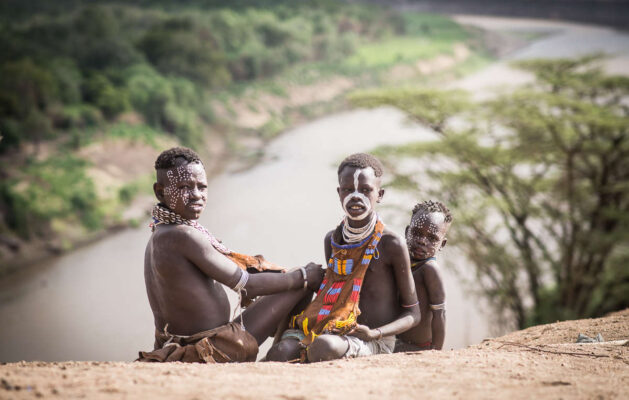The disappearance of endangered languages is not just a present-day occurrence. In the last 5000 years, linguists have estimated that at least 30,000 languages were born and disappeared. Usually, without leaving a trace.
However, with time it is clear that the rhythm of language mortality has increased dramatically, especially since the European colonial conquests. For example, during the last three centuries, while Europe lost a good dozen languages, Australia and Brazil lost several hundred. In Africa, more than 200 languages already have less than 500 speakers. Not to mention the suppression of many Amerindian languages, and even minority peoples who lived in the former USSR or in China (Ingush, Kalmus, Mekhet, Nus, Achangs, etc.).
Survival
The survival rate of endangered languages depends not only on their official recognition, but also on the number of their speakers. As well as the geographical characteristics of the area where they are spoken.
 In 1989, the 21 member states of the European Council discussed the survival rates of these languages and proposed a classification system. Let’s see what is happening by applying this classification to all continents. This makes it possible to establish priorities in the language policies of states. It will also help to understand why it is more urgent to save languages that can still be saved.
In 1989, the 21 member states of the European Council discussed the survival rates of these languages and proposed a classification system. Let’s see what is happening by applying this classification to all continents. This makes it possible to establish priorities in the language policies of states. It will also help to understand why it is more urgent to save languages that can still be saved.
Protection provided
Minority languages that are “safe from disappearance” are those that have the status of an official language in their country. Another factor is impermeable language boundaries. In Europe, these include Icelandic, Danish, Finnish, Åland (Finland), Slovak, Czech, Slovene and Hungarian. Elsewhere in the world, there is Kinyarwanda (Rwanda), Kirundi (Burundi), Somali, Tigrinya (Eritrea), Armenian, Laotian and Dzongkha (Bhutan).
Almost assured protection
Nearly secure languages are well-established languages with regional recognition, legal status and at least one million speakers. This is the case for Catalan in Catalonia (Spain), French in Quebec (Canada), Creole in Haiti, Tamil in Tamil Nadu (India) and Sindhi in the Sindh province of Pakistan.
Languages ”with significant danger”
These are languages with a fairly large number of speakers, but whose status remains very weak, if not non-existent. In Europe this includes Sardinian and Friulian in Italy, Occitan and Breton in France, Welsh in Wales (UK). Elsewhere, further protection is needed for Maori in New Zealand and many African languages, including Ibo, Yoruba and Fulani in Nigeria.
Languages ”with limited danger”
Limited-endangered languages have a relatively small number of speakers, less than one million, and a fairly enviable status. Small languages with favorable geographical conditions are placed in this category: Faroese in the Faroe Islands, Greenlandic in Greenland, Euskara in the Basque Country (Spain), Frisian in the Netherlands and French in Acadia (New Brunswick). Many of these areas are, of course, islands or areas that are isolated or difficult to access. This will help to protect the language community.
Languages in danger of extinction
 Endangered languages are very little spoken and have not been able to acquire any official status. For example, in Europe there is Sami, spoken in the far north of Scandinavia. However far more at risk are the hundreds of languages spoken by the indigenous peoples of the Americas, Oceania, Asia (Indonesia, Philippines, India, Burma, etc.) and Africa.
Endangered languages are very little spoken and have not been able to acquire any official status. For example, in Europe there is Sami, spoken in the far north of Scandinavia. However far more at risk are the hundreds of languages spoken by the indigenous peoples of the Americas, Oceania, Asia (Indonesia, Philippines, India, Burma, etc.) and Africa.
In 2010, UNESCO published (in English, French, and Spanish) their Atlas of the World’s Languages in Danger (2010). UNESCO’s list includes 2464 in the category “languages at risk”. So we have here 72.2% of the worlds’ countries represented in the category. The regions most likely to perpetrate “linguicide” are India, the USA, China, Russia, Australia, Papua New Guinea, Nepal, and Colombia. It is in these countries where the number of languages spoken by the indigenous population is highest.
It should not be forgotten that there are at least 195 countries in the world and that the list only showed 27. So, there are 168 countries for the remaining 683 languages, or 27.8% lacking. Take the case of Slovakia, a country of 5.4 million inhabitants with 13 languages. Five languages are in danger (38.4% of the country’s languages): Burgenland Croatian, Eastern Slovak, Romani, Ruthenia, and Yiddish. There are so many countries like this with several endangered languages.
What can be done to keep a language from disappearing?
To prevent a language from disappearing we must create favorable conditions for speakers to talk their language, and teach it to their children. This often requires national policies that recognize and protect minority languages, and education systems that promote mother tongue education. In some cases, creative collaboration between community members and linguists is required, to develop a writing system. Also, the introduction of formal teaching of the language. Often, the overriding factor is the attitude of the community towards its own language. Therefore, it is essential to create a social and political environment that encourages multilingualism and respect for minority languages, so that the use of these languages is seen as an asset, rather than a handicap.
Some languages currently have too few speakers to survive, but linguists can, if the community wishes, archive as much language content as possible, so that it does not disappear without a trace.


